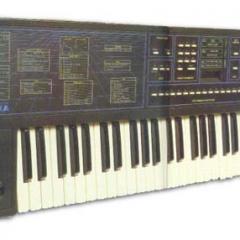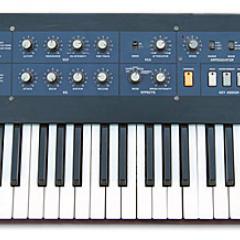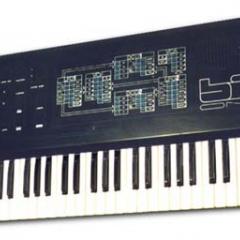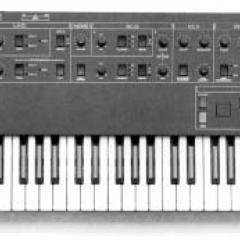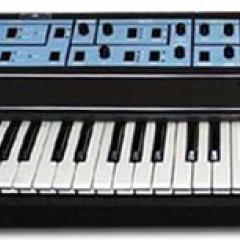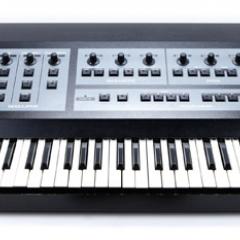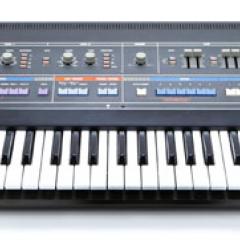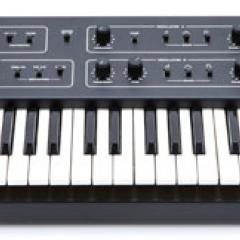Crumar Stratus
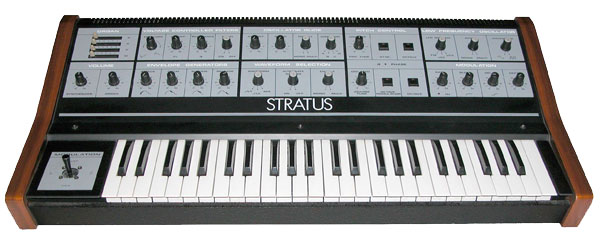
Introduced in 1982, the Stratus is a somewhat rare, slimmed-down version of the Crumar Trilogy. It is basically two synths in one: a Synthesizer and an Organ synth, which can be played separately or both at the same time. There are independent master volume knobs for the Synthesizer and Organ sections. The Organ section features four horizontal drawbars to adjust the volumes of each of the 4 octaves (2', 4', 8' and 16').
The Stratus is a 6-note polyphonic analog that uses the highly popular CEM chips that have also been used in other popular synths of the time including Jupiters, OB-X synths, Prophets—even modern Dave Smith Instruments. The Stratus has a total of two oscillators (DCOs), and they’re fed through divide-down ICs, just like an organ or string machine. The oscillators offer saw and square waveforms, or a mix of the two, and a mono/unison mode. The two oscillators can be tuned separately and synced. A unique option is the "Alternate Saw/Sq" mode which alternates the voices between square and sawtooth waveforms—play a chord and some voices will be square, others will be saw, or bang out a solo and each note will be a different waveform—definitely unique but maybe not always practical.
What is special about the Stratus is that it has six VCFs and six VCAs—one per voice. The filter has a nice warm sound and offers a good amount of flexibility. It has cutoff, resonance, envelope amount controls and and an external pedal control option. The LFO can do FM, wah (when assigned to the VCF) or tremolo (when assigned to the VCA). The LFO section also has adjustable slope and delay controls, an uncommon but useful feature. Another uncommon but interesting feature is the Octave Modulation mode, in which the LFO will apply square wave pitch modulation over an entire octave, resulting in some pretty wild sounds. The Oscillator Glide is a portamento effect with some extra features besides the usual Amount and Speed controls. It can be set to Mono or Multi trigger and has four direction modes. Finally, there is a typical ADSR envelope generator section.
The keyboard is a standard 49-note affair with no velocity or aftertouch. A joystick controller left of the keyboard can be used as a pitch bender that can also modulate the VCF and VCA sections. There are independent outputs for the Organ and Synthesizer sections, pedal control inputs for the filter, sustain pedal, and LFO sync. There is also a TM Interface for use with the Steiner Master's Touch—a wind controller that can be used to create pitch bends and vibratos using your breath. However, there are no CV/Gate options.
The Stratus does not have any sort of user patch memory. But it did originally ship with preset template overlays. These were paper overlays that you lay on to the face-plate (with cutouts for all the knobs) that had markings to indicate where to set each knob in order to re-create a certain preset or sound. See an image here.
The Stratus is rare, has very unique features and it looks and sounds really good too. And the included Organ section makes it stand out from the other more conventional analog poly-synths of the time, such as the Jupiters, Prophets and Oberheim OB-series. The Stratus (along with the Trilogy) marks Crumar's transition from Organ builders to synthesizer builders.
Demos & Media
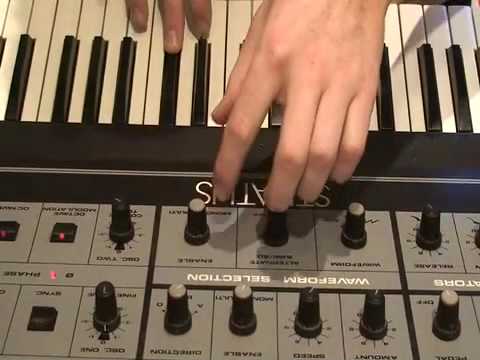
Specifications
Resources
Bob Cash's Recording Studio and MatrixSynth.
Reviewed January 2011
